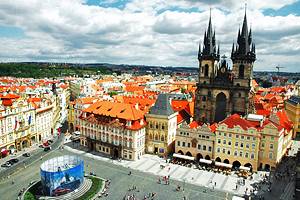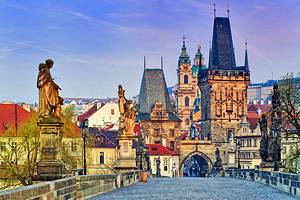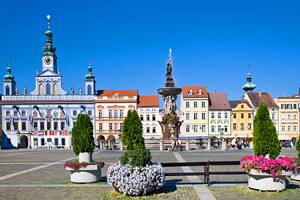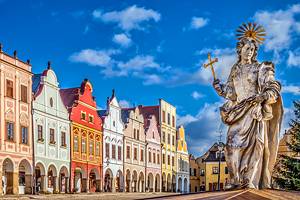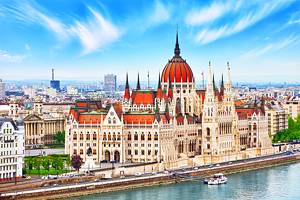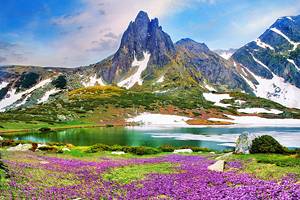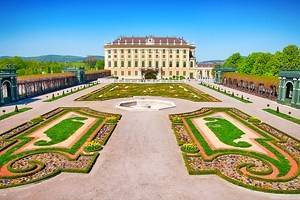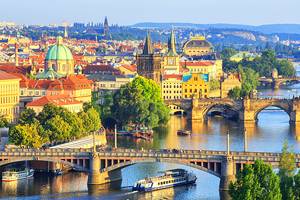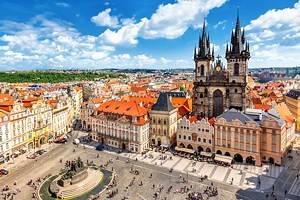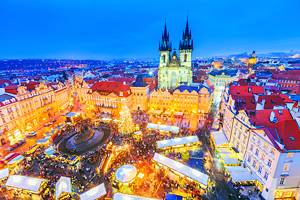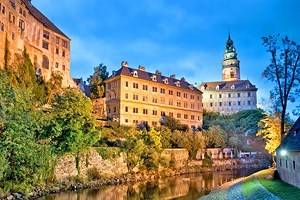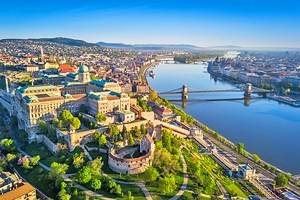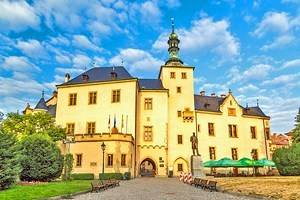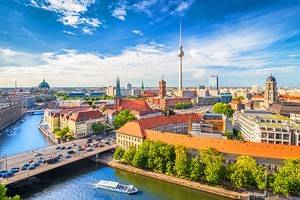Tourist Attractions in Europe
From France's cultural attractions to Italy's wealth of historical sights and Germany's magnificent list of stunning architectural destinations, European countries have lots to offer visitors. As a result, picking the best attractions to visit can be extremely difficult.
Nevertheless, we've put together a list of the best attractions in Europe, no matter whether you're looking for a mysterious destination like Stonehenge or a chance to immerse yourself in a world of art and architecture in ancient Prague Castle or the magnificent Louvre Museum.
Learn about the best places to visit in this culturally diverse continent with our list of the top attractions in Europe.
- Eiffel Tower, France
- Colosseum, Italy
- Acropolis of Athens, Greece
- Stonehenge, England
- Louvre Museum, France
- Prague Castle, Czech Republic
- Duomo di Forenzi (Santa Maria del Fiore Cathedral), Florence, Italy
- Venice Canals, Italy
- The Matterhorn, Switzerland
- Amsterdam's Canals, The Netherlands
- The Alhambra and Generalife Gardens, Spain
- Berlin's Brandenburg Gate, Germany
- The Vienna Hofburg, Austria
- Mosteiro dos Jerónimos, Portugal
- Sistine Chapel, Vatican City
- Sagrada Familia, Spain
- The Cordoba Mosque-Cathedral, Spain
- Neuschwanstein Castle, Germany
- The Leaning Tower of Pisa, Italy
- Pompeii, Italy
- Map of Tourist Attractions in Europe
Eiffel Tower, France
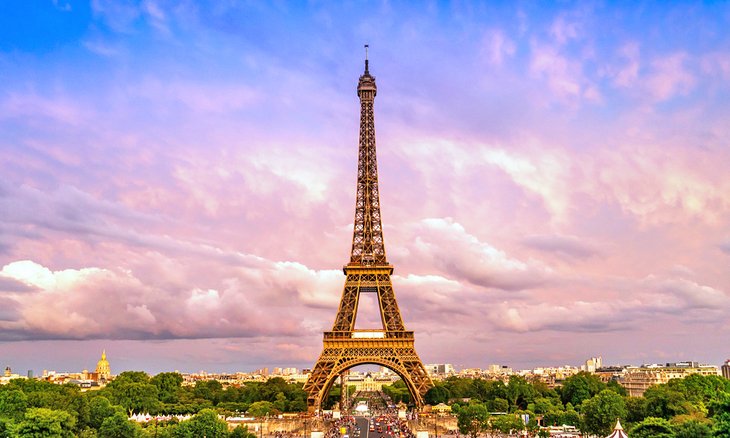
The Eiffel Tower is one of France's most famous sights. Sitting in the heart of the Champ de Mars in Paris, the wrought-iron tower was originally built to serve as the entrance to the 1889 World's Fair.
Engineer Gustave Eiffel received much criticism for his design, with people calling it a monstrosity and "an impossible task" - at the time of construction, the 324-meter-tall tower (equivalent to an 81-story building) was the tallest structure in the world.
The tower's three levels house restaurants and cafés, gift shops, exhibits about the history of the tower, the original restored office of Gustav Eiffel, and several observation decks. The first two levels of the Eiffel Tower can be accessed via a staircase or a lift, but the third level is only accessible to visitors via an elevator.
At night, the entire tower is illuminated with golden lights.
- Read More: Tourist Attractions in Paris
Colosseum, Italy
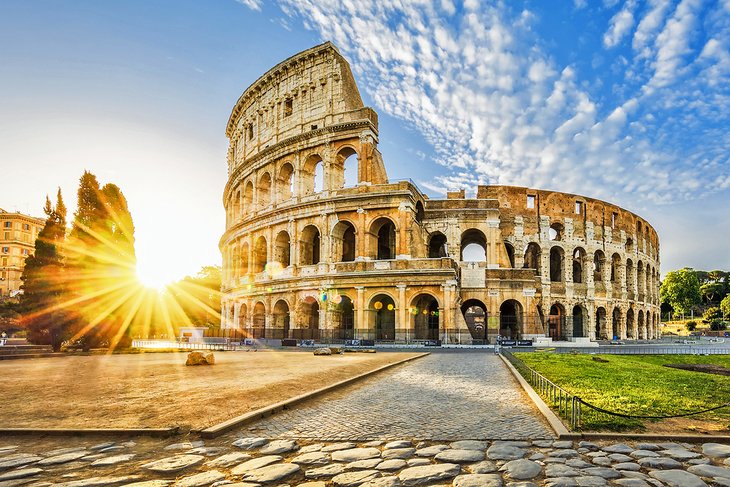
Rome's Flavian Amphitheater, better known as the Colosseum, remains one of the most iconic symbols of Imperial Rome and is one of the most visited tourist sites in Italy. It was built in AD 70-80 using travertine limestone and volcanic rock. At the time of its construction, and for a long time after, it was the world's largest amphitheater and held up to 80,000 spectators.
With an outer wall height of 48 meters and a base area of 24,000 square meters, the Colosseum is an imposing structure. At the peak of its glory, it contained a velarium (a retractable awning to protect spectators during bad weather) and a thick wooden floor covered by sand. Under this floor, an underground labyrinth of tunnels held animals and gladiators before the fights.
Although most famous as the site for gladiator fights, the Colosseum was also home to many other shows and spectacles, including re-enactments of famous battles and executions. More impressively, it was also the home of mock sea battles, when the arena was filled and drained rapidly with water so vessels could float during the shows.
Over the following centuries, the amphitheater served as a fortress, a shrine, and makeshift housing. It was also heavily looted by stone robbers.
- Read More: Visiting the Colosseum: Highlights
Acropolis of Athens, Greece
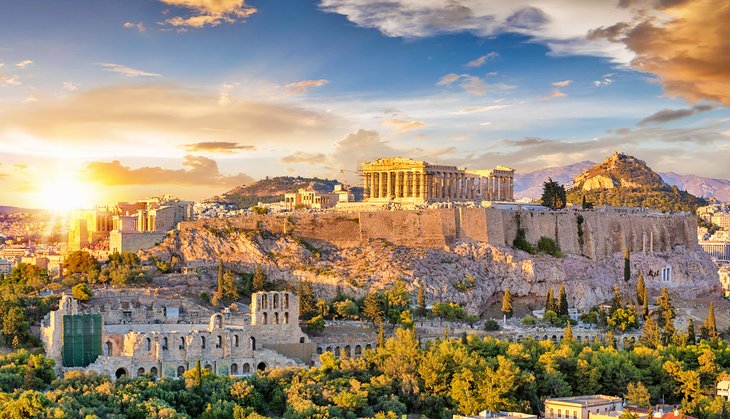
Watching over Athens from atop a rocky outcrop, the ancient citadel is one of Greece's most famous tourist destinations.
The Acropolis' most famous buildings were all constructed in the fifth century BC under the watchful eye of statesman and general Pericles.
The heart of the Acropolis is the Parthenon, a temple built to thank the gods for the victory over Persian invaders (though it also served as the city treasury for a time). Other prominent buildings include the gateway Propylaea (which serves as the entrance to Acropolis), the Erechtheion Temple (dedicated to Athena and Poseidon), and the tiny but beautiful Temple of Athena Nike.
Many of the buildings in the Acropolis were damaged during the Morean War in 1687. Most of the ancient artifacts found within the temples that survived the damage have been since moved to the Acropolis Museum nearby.
- Read More: Attractions & Things to Do in Athens
Stonehenge, England
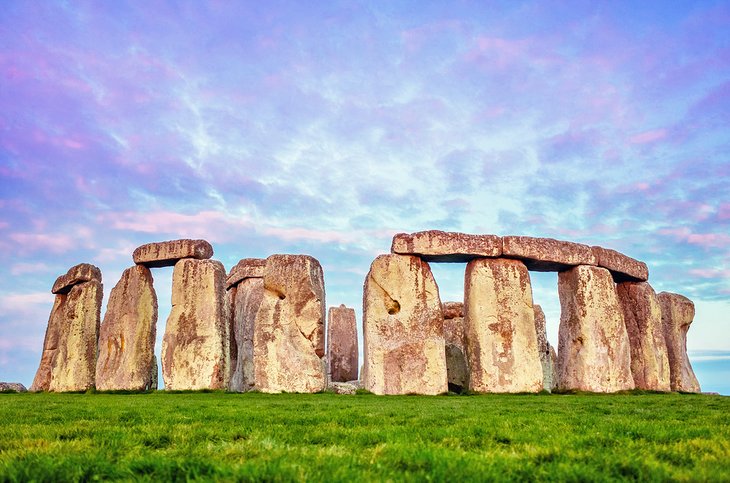
The prehistoric monument of Stonehenge is one of the most famous landmarks in the UK. Built between 3000 BC and 2000 BC, Stonehenge sits in an area of England known for its many burial mounds.
A massive ring of four-meter-tall sandstones with an inner horseshoe-shaped stone circle, the breathtaking Stonehenge and its surroundings are a UNESCO World Heritage Site.
The purpose of Stonehenge remains a mystery. Archeologists believe it could have been a burial ground dating back to 3000 BC. It could have also served as a Neolithic calendar (as the layout of the stones is set to mark sun movements), a religious place, or a scientific observatory. The stones, which weigh an estimated 25 tons each, were transported at least 19 kilometers to their current location.
Louvre Museum, France
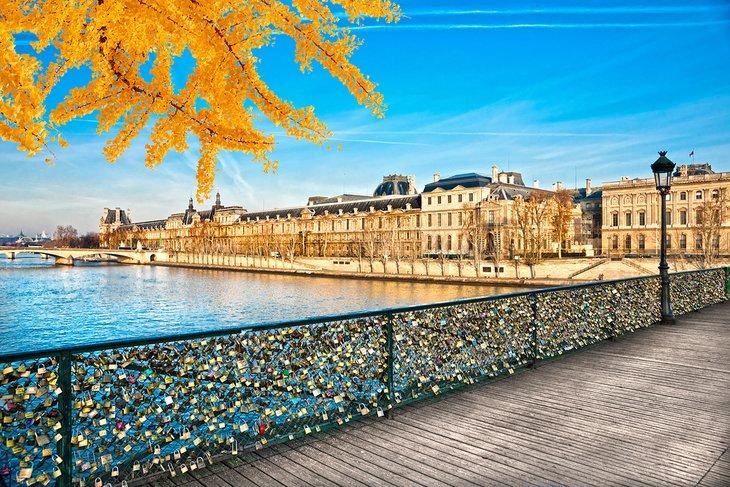
The world's largest art museum, and the most visited, sits right on the bank of the Seine River. The original 13th-century Louvre Palace that once stood here was expanded and rebuilt over the centuries, resulting in the massive almost 73,000-square-meter building you see today.
Outside, the museum's glass and metal pyramid has become a modern symbol of the Louvre. It measures 34 meters on each side and 21.6 meters tall and is now used as the main entrance to the museum.
Of the Louvre's stunning collection of 380,000 objects, about 35,000 are on permanent display. These include not only paintings but also drawings, sculptures, and archaeological items. In addition to Leonardo da Vinci's La Mona Lisa and the Venus of Milo, the museum is also home to the eight-foot-tall Winged Victory of Samothrace sculpture and the magnificent six- by nine-meter Coronation of Napoleon painting.
Prague Castle, Czech Republic
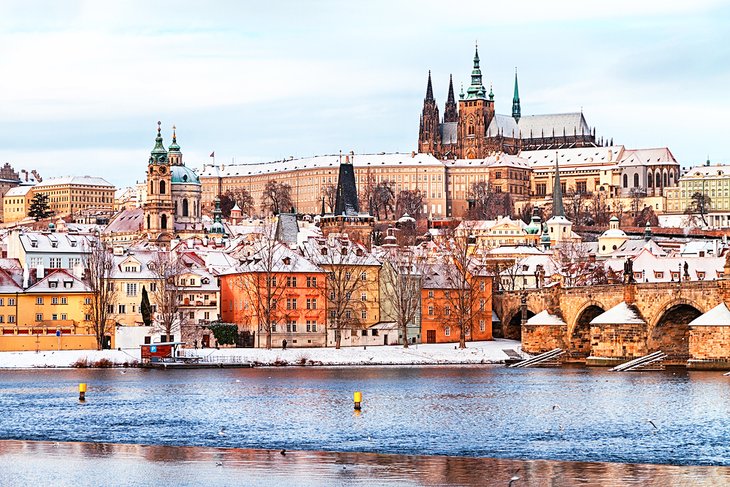
Almost two million people visit Prague Castle every year, making it one of the most popular attractions in the Czech Republic. Recognized by the Guinness Book of Records as the largest castle complex in the world, Prague Castle is a stunning combination of Gothic and Romanesque architectural styles.
While the castle itself dates back to the 9th century, some of the other structures inside the 70,000 square meters of the complex were built centuries later. Some of the most stunning buildings within the Prague Castle complex include St. Vitus Cathedral, St. George's Basilica, and the 16th-century Golden Lane. This lane of small medieval houses once housed the palace guards and goldsmiths, and centuries later, writer Franz Kafka and Nobel prizewinner Jaroslav Seifert.
The Castle grounds are also home to the office of the President of the Czech Republic and to a secret room that holds the Bohemian Crown Jewels. The National Gallery has a small museum branch within the castle, and there's also a toy museum focused on wooden toys.
Duomo di Forenzi (Santa Maria del Fiore Cathedral), Florence, Italy
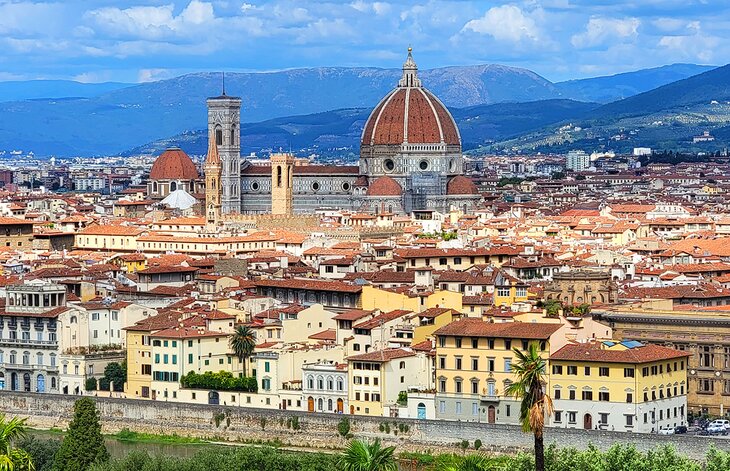
Many travelers dream of a chance to see Florence, and when you round the corner to the Piazza del Duomo and see the stunning Santa Maria del Fiore Cathedral, you'll know why. Pictures cannot convey the size and grandeur of this building, you must see it in person.
The white and grey marble facades are intricate works of art showcasing saints and other notable figures along with lovely geometric patterns. Note the 44 stained glass windows, and in particular the large rose window in the front, that are, in themselves, great works of art.

Inside, the décor is more somber, until you look up to the great fresco of The Last Judgment by Giorgio Vasari and Federico Zuccari painted on Brunelleschi's Dome where the reliefs are a riot of color.
For a bird's-eye view of the Cathedral and the surrounding city, climb the 463 steps to the top of the dome and step out onto the lantern. For the iconic full view over the cathedral and dome, head to Piazzale Michelangiolo on a hillside overlooking the city.
Read More:
Venice Canals, Italy

Italy's magical "floating city" has a wealth of beauty, romance, and history to please every visitor. Over 150 canals run through Venice, connecting 118 tiny islands via some 400 bridges and a number of walkways. A romantic gondola ride is one of the top things to do in Italy.
The magic of Venice doesn't end in the water. Charming alleyways and passageways, hidden courtyards, and stunning examples of Gothic and Renaissance architecture line the banks of the canals. Much of the beautiful architecture can be better appreciated from the water as you travel under bridges and around corners of the Grand Canal on a gondola sightseeing tour or a vaporetto, Venice's water bus.
Venice's Grand Canal, the main water-traffic corridor of the city, is flanked by many palazzos and churches, including the 15th-century Venetian Gothic Palazzi Barbaro and the Rococo-style Ca' Rezzonico Palace, with a facade completely covered in white marble.
- Read More: Tourist Attractions in Venice
The Matterhorn, Switzerland

At 4,478 meters high, the Matterhorn is one of the highest summits in Europe. The stunning mountain sits right over the Swiss town of Zermatt, on the border between Switzerland and Italy. A popular hiking destination in the Alps, the Matterhorn is unique because it's a pyramid-shaped mountain that can be climbed on all four sides.
For the non-climbers out there, it's also possible to complete a 10-day trek around the mountain. This is considered one of the most beautiful hikes in the Alps, crossing glacial lakes, Alpine forests, and flowering meadows.
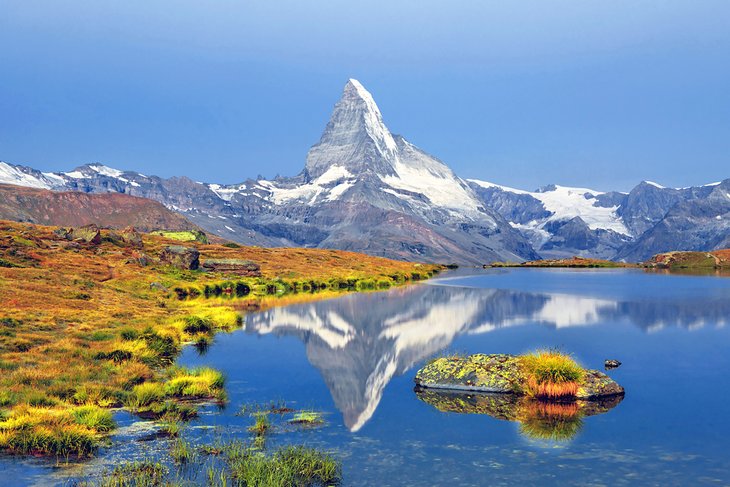
The area around the Matterhorn and Zermatt attracts skiers and snowboarders during winter, with the Zermatt and Breuil-Cervinia resorts offering ski lifts high up the Theodul Pass. There's also the Matterhorn Museum, chronicling the fascinating history of Alpinism, and a chance for an up-close-and-personal view of the snow-covered peaks via a helicopter tour. Zermatt is also known as a high-end dining hotspot with four Michelin-starred restaurants.
Amsterdam's Canals, The Netherlands
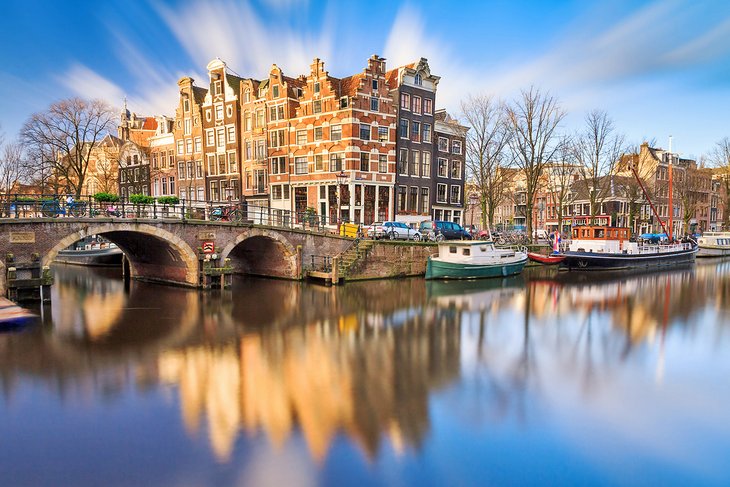
Aptly known as "the Venice of the North," Amsterdam is fueled by the many hundreds of kilometers of grachten (canals) that cut through the city. The city has three main canals - Herengracht, Prinsengracht, and Keizersgracht - and over 1,500 bridges connecting the islands.
The Prinsengracht canal is probably the most famous canal in the Netherlands, as a number of notable buildings are situated along its shores. These include Anne Frank's house; Amsterdam's tallest church, Westerkerk; the 17th-century Deutzen Hofje house, and a number of other impressive historical constructions.
The Singelgracht canal, though not one of the largest, is well known for bordering the very upscale Jordaan neighborhood, where Rembrandt spent the last few years of his life.
Another famous canal, the Brouwersgrach, was once used by ships returning with spices from Asia. Today, it's a favorite canal to park houseboats, and it's flanked by warehouses that have been converted into chic, expensive apartments and lofts.
- Read More: Attractions & Places to Visit in Amsterdam
The Alhambra and Generalife Gardens, Spain
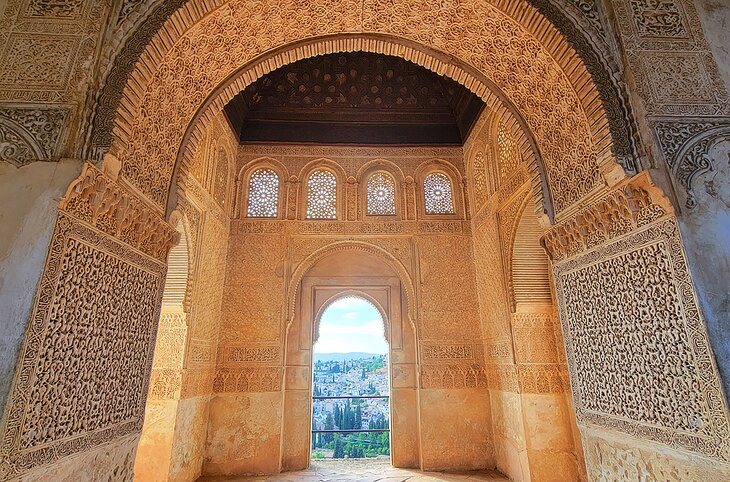
The palace and fortress complex Alhambra - which literally translates to "the red one" - was originally built in 889 CE, though it didn't achieve its current look and massive 142,000-square-meter size until the mid-13th century.
The fortress was neglected and vandalized over the centuries, and though it was also partially restored, it wasn't always done with great care. Still, the Alhambra stands as one of the most magnificent displays of Muslim art and architecture in Spain.
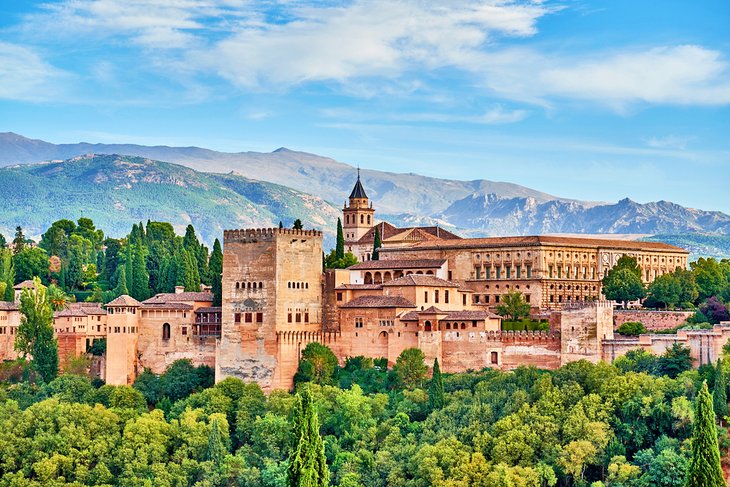
Built using a mix of red clay, layered brick, and stone, the natural earth-red color of the Alhambra is its most stunning feature. Inside, intricate stucco work covers the many Moorish palaces, royal baths, and fortified towers.
The adjoining Palacio de Generalife, with its terraced Persian gardens is also worth a visit - not only for its magnificent views of the Alhambra but also because the summer palace, with its many colonnades and pavilions, is a beauty in itself.
Read More:
Berlin's Brandenburg Gate, Germany
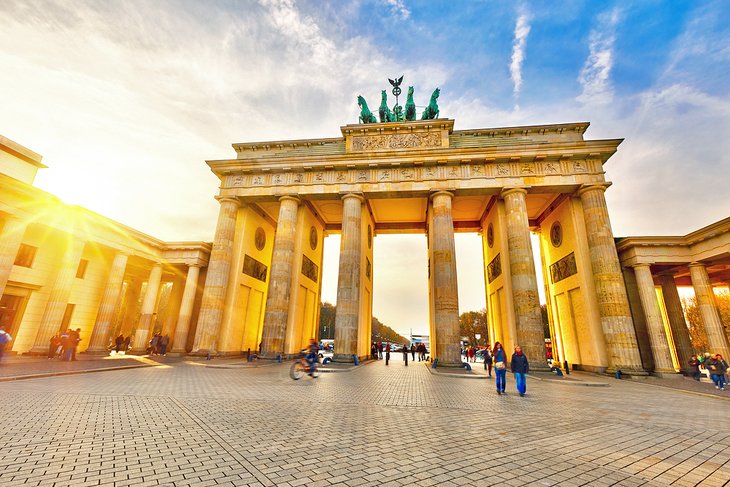
Built by orders of Prussian king Frederick William II in the 18th century, the Brandenburg Gate has become the symbol of Berlin. A massive 26 meters high and over 65 meters long, the gate is crowned by a quadriga or chariot drawn by four horses.
The gate owes its name to the town of Brandenburg an der Havel as it sits where the road connecting Berlin and Brandenburg town starts. Over the past two centuries, the gate has had center stage in many of the historical events that shaped Germany. It was used as a Nazi symbol and survived WWII despite heavy damage from explosions and shootings.
Years later, the gate became the unofficial border between East and West Berlin until the construction of the Berlin Wall. And when the Wall fell in 1989, 100,000 people gathered at the Gate to celebrate.
- Read More: Tourist Attractions in Berlin
The Vienna Hofburg, Austria
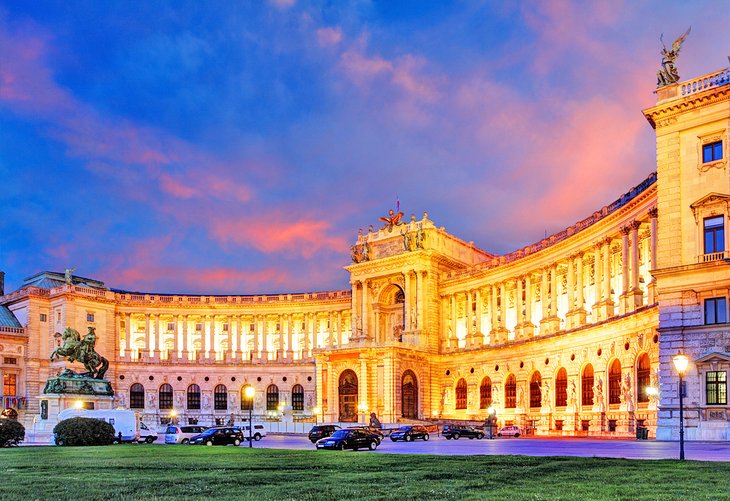
The House of Habsburg originally had the palace built in the 13th century to house one of the most influential royal families in Europe. Once an imperial palace, home to kings and emperors of the Holy Roman Empire, the Hofburg is now the official residence of Austria's president.
The palace was expanded over the centuries with the addition of royal residences, a chapel, the Hofreitschule (Spanish Riding School), the Court Library, and the imperial court theater (which is the National Theater of Austria in Vienna today).
The Vienna Hofburg is massive at 240,000 square meters divided into 18 wings - and much of it is open to the public. The sprawling complex also houses 19 courtyards and over 2,500 rooms, many of which are still occupied by the people who work and live here.
- Read More: Tourist Attractions & Things to Do in Vienna
Mosteiro dos Jerónimos, Portugal

The Jerónimos Monastery is one of Portugal's most recognizable constructions. Built in Lisbon near the Tagus river, the UNESCO World Heritage Site monastery is a beautiful example of Manueline or Portuguese late Gothic style.
Manueline architecture is notable for its ornate details, with lots of semicircular arches in doors and windows, and for incorporating maritime elements, such as shells and pearls, into the design.
Construction on the monastery began in 1501 and took just over 100 years. The original structure is built of gold-colored limestone, but different kings and architects over the years added their touch via imposing murals, gold-tiled ceilings, and lots of detailed woodwork.
The main entrances to the monastery are through the gates of the Church of Santa Maria, including a 32-meter, two-story-high side entrance and the smaller southern doorway, which opens directly to the main altar. The monastery itself has large grounds and gardens, where fountains, 16th-century buildings, and pavilions offer plenty to explore and discover.
Read More:
Sistine Chapel, Vatican City
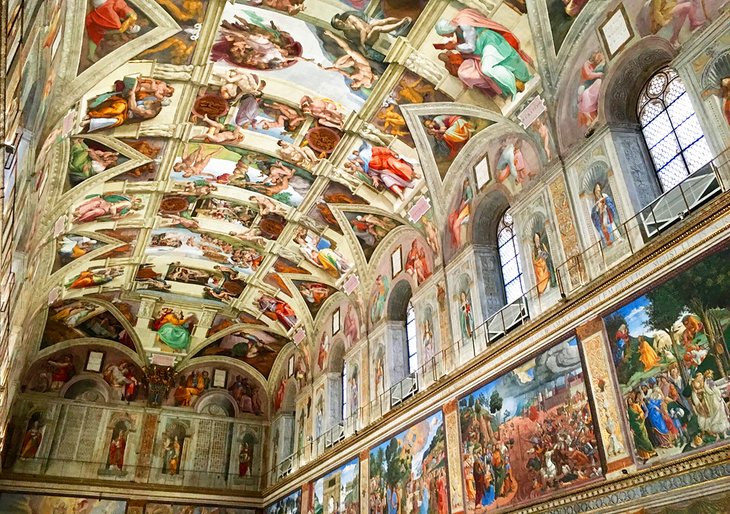
There's no better reason to visit Vatican City than walking through the stunning beauty of the Sistine Chapel. Built starting in 1473 and decorated with frescoes by Botticelli, Domenico, Michelangelo, and other Renaissance painters, the chapel is still used today for the papal conclave, during which a new pope is chosen.
Michelangelo himself is responsible for the jaw-dropping paintings that adorn the 40-meter-long and 13-meter-wide ceiling – this is over 460 square meters of images inspired by both the Old and New Testament.
The chapel can only be accessed through the Vatican Museums, a vast complex of galleries that stretches for over 14 kilometers and houses one of the world's largest collections of ancient art –too big to be fully explored in one day, so good planning is needed if your ultimate goal is to make it through to the Sistine Chapel, too.
Sagrada Familia, Spain

The church of the Sagrada Familia has been under construction since 1882 and today is one of Barcelona's most famous sights. Part of the reason for the delay was that once the first architect resigned, the second one who came on board, Antoni Gaudi, completely changed the original plans to build a stunning Art Nouveau and Gothic architectural marvel. His original design included eighteen spires and three grand façades (the south-facing one has yet to be completed).
Gaudi worked on the church from 1883 until his death in 1926 – but by then only a quarter of the project had been finished. He is buried in a crypt inside the church. The hope was that the Sagrada Familia would be finished in 2026 to commemorate 100 years of Gaudi's death, but this has been delayed again.
The Cordoba Mosque-Cathedral, Spain
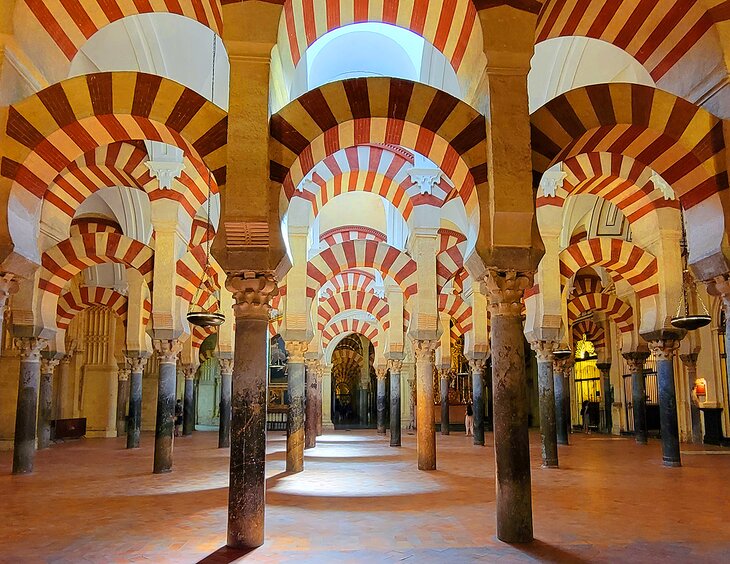
The Cordoba Mosque-Cathedral (Mezquita-Catedral de Cordoba) is an architectural marvel dating from the 8th Century and is the star attraction in the delightful city of Cordoba, Spain. This stunning building is a fusion of mosque and cathedral that defies easy description. Known also as the Great Mosque of Cordoba, it's perhaps the finest example of Moorish architecture in Spain. As you wander through its 856 marble columns and red and white arches you can't help but feel a sense of awe.
Owing to its complex history, the building is full of interesting surprises. Although it was built as a mosque, it was a Christian sanctuary from 1523, complete with a stunning Gothic choir in the center of the complex. You can also see the Mihrab Nuevo, an amazing room with beautiful Byzantine mosaics inlaid with verses from the Koran.
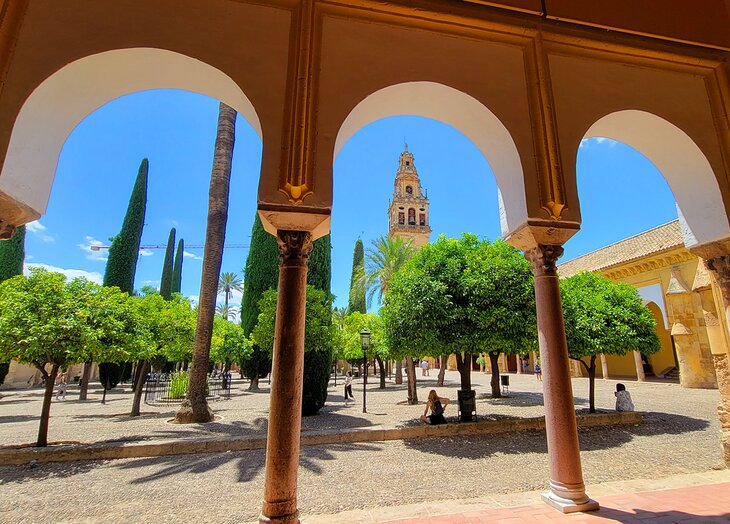
Outside the main building, but still within the walls is the delightful Patio de los Naranjos, a shady area full of orange trees. To truly appreciate the size of the structure and for lovely views out over Old Town Cordoba, climb the 54-meter-high bell tower near the front entrance.
Official Site: https://mezquita-catedraldecordoba.es/en/
Read More: Tourist Attractions in Cordoba
Neuschwanstein Castle, Germany
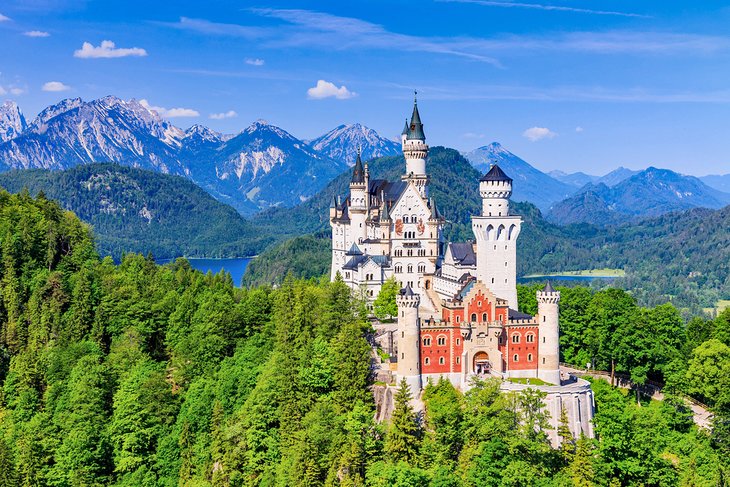
The castle that inspired Disney's Sleeping Beauty's castle was built high up in the Bavarian Alps by order of 19th-century King Louis II – better known historically as "Mad King Ludwig." If the castle looks like something out of a fairy tale it's because that was Louis II's vision all along. He wanted a castle that looked somewhat medieval, somewhat out of legends, and very much over-the-top romanticized.
Despite its medieval design aspirations, the king also wanted comfort, and had the castle outfitted with running water, flush toilets, an elevator and a telephone line – even though phones were so rare at the time, he was probably unable to call anybody. Louis II only used the castle for about six months before dying, and the place was almost immediately converted into a museum.
The Leaning Tower of Pisa, Italy

Construction of the tower of Pisa – which is part of the cathedral complex that includes three other buildings – started in 1172, thanks to the generosity of widowed nobleman Donna Berta di Bernardo. Unfortunately, the architect overseeing the construction failed to properly survey the ground before starting, and the tower started to sink by the time the second floor had been built.
Battles with neighboring Florence then halted construction for over a century. By the time the work resumed, the soil had settled enough that the tower didn't fall – it did end up being 55.86 meters tall on the lower side and 56.67 meters on the higher side. It took almost two hundred years for the construction to be finally finished.
Today, tourists can again climb one of two staircases (the north-facing one has two extra steps because of the incline) to the tower bell chamber to see its seven bells, one for each note of the musical scale.
Read More: Tourist Attractions & Things to Do in Pisa
Pompeii, Italy
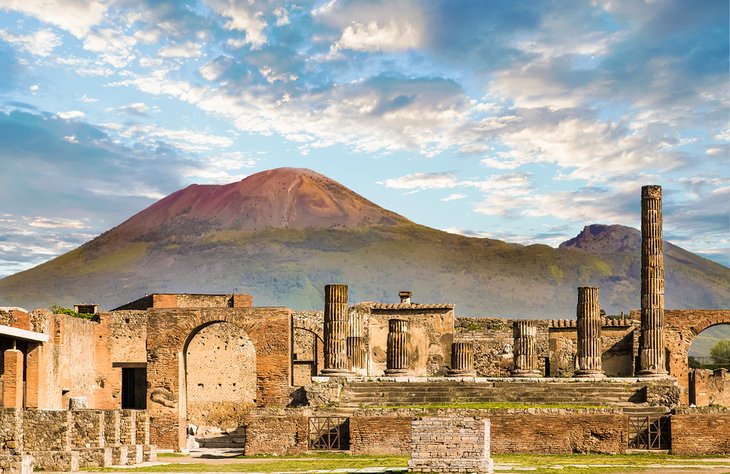
The ancient city of Pompeii is one of Italy's most visited attractions and perhaps one of the most fascinating. The tragedy of Mount Vesuvius erupting in 79 CE caused the death of about 10 percent of Pompeii's population and resulted in an incredibly well-preserved town, as the city was buried under tons of volcanic ash.
Today, visitors to Pompeii can again walk its streets and venture into the town's most popular buildings: the Lupanare (brothel), the Villa of the Mysteries (home to a massive fresco that covers three walls), and thermopolium (the Roman version of a fast food joint).
Pompeii ruins cover a massive 440,000 square meters, and it would take visitors three to four days to truly explore them completely.
Read More: Visiting Pompeii: Things to See


